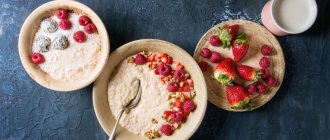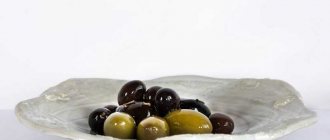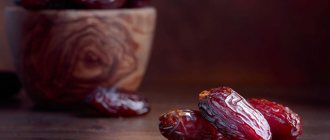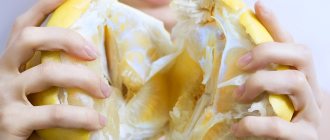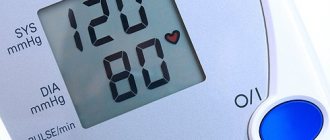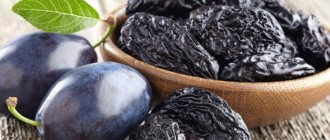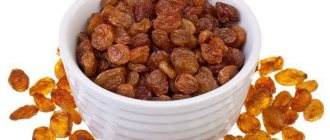Brief description and history of the plant
Southeast Asia is considered the birthplace of these tropical fruits.
And now their wild ancestors are found there - small greenish fruits with large seeds. A little later, the plants were brought to Africa and America.
Modern bananas sold in stores are obtained by cultivating plants that grow in nature.
Banana plants are properly called grass because the shoots grow, produce flowers and fruit, and then die. Despite their gigantic growth (5-15 m), they do not have a woody stem.
Banana is a vegetable, fruit or berry
From the point of view of botanical scientists, a banana is a berry, since it is a small fruit of a plant that, by its characteristics, is a grass.
However, in everyday life it is considered to be a fruit, because the cultivated varieties sold in stores are more similar to it and have a sweet taste.
Where and how they grow
The main condition for the growth of this crop is a hot climate, so bananas are grown in countries located near the equator.
The banana plant has powerful roots and a stem on which huge leaves are located.
The clusters contain up to 300 fruit specimens.
The main suppliers of fruits are the countries of Latin America and Africa.
Varieties
All varieties of banana plants are divided into 3 groups:
- decorative;
- plantains;
- dessert.
Ornamental varieties are inedible, but they have beautiful flowers.
Plantains are fruits that require heat treatment. Only after this they are eaten.
Dessert fruits are those that can be eaten raw.
Origin story
Based on some sources, bananas were originally grown in parts of Southeast Asia and Papua New Guinea in 5000 BC.
After that, they were grown in some regions of Africa and Madagascar. In the 9th-10th century. bananas reached the countries of the Middle East and North Africa, including the regions of Egypt and Palestine. They were even mentioned in ancient Islamic texts. When travelers from the Middle East and Europe visited Central and South America, they brought bananas with them, introducing the fruit to another part of the world's population. Portuguese travelers were the first to bring bananas to these regions, where they are still eaten in large quantities to this day.
Bananas took root in the tropics of South and Central America, where they began to be grown in large quantities, and their popularity reached North America. Today these fruits are grown in large quantities in Brazil, Ecuador and Colombia. However, India, Uganda and China are the largest banana exporting countries worldwide. Wild varieties originally had large seeds inside. The bananas we eat today are parthenocarpic fruits, which means they ripen and grow without the need for seed pollination. Today's bananas have smaller flesh with small seeds inside.
Chemical composition of banana
The fruits contain a large amount of useful substances. Their composition is perfectly balanced and includes many antioxidants.
The chemical composition of banana is characterized by a high content of vitamins.
Vitamins
The high content of vitamins allows the fruit crop to be classified as a valuable food product.
Includes:
| Vitamins | Content per 100 g, mg | Daily requirement, mg |
| WITH | 8,7-10 | 60 |
| IN 1 | 0,05 | 1,5-2 |
| AT 2 | 0,05 | 2-2,5 |
| AT 6 | 0,4 | 2 |
| A | 0,07 | 5 |
| RR | 0,6 | 18-20 |
The leading role belongs to vitamin B6 (pyridoxine), because 2 fruits weighing 130 g cover the daily requirement for this substance.
Minerals
Fruits contain:
| Name | Content per 100 mg of product, mg | Daily requirement, mg |
| Potassium | 358-422 | 2500 |
| Magnesium | 27 | 400 |
| Sodium | 31 | 1300 |
| Calcium | 3 | 2500 |
| Iron | 0,3 | 10-18 |
Banana is among the foods with the highest content of potassium and magnesium.
The nutritional value
100 g of fruit contains:
- 2.1 g protein;
- 1.7 g fat;
- 23 g carbohydrates.
Does it contain starch?
The largest amount of starch is found in unripe fruits. As they ripen, it turns into sugar, so ripe fruit contains almost no starch.
Ripe fruits contain almost no starch.
Glycemic index
The glycemic index (GI) of banana fruits is 42-60, depending on the variety and degree of ripeness. It determines the amount of fast carbohydrates in the product. Their sugar content is taken as 100 conventional units.
Main varieties of bananas, chemical composition of pulp and quality requirements
Bananas are the fruits of a perennial herbaceous plant in tropical and subtropical countries; they are grown in 120 countries around the world. The largest producers of table bananas include countries such as Ecuador, Colombia, Chile, Brazil, India, the Philippines, etc. According to the food organization FAO, global production of these fruits increases every year.
In total, there are more than 400 varieties of bananas of 60-70 species. For example, in Vietnam there are more than 30 varieties, in India - more than 60. Exports began with the invention of refrigeration equipment and the possibility of transportation to regions with temperate climates. But not all countries export bananas - for example, Indonesia, Brazil, China, Thailand grow them only for the domestic market.
Bananas are the most popular and accessible tropical and subtropical fruit. Import volumes are growing, but there is a problem of product loss in transit from the point of collection to the consumer.
Bananas belong to the Musaceae family. Almost all banana varieties entering the world market belong to the AAA genomic group. Bananas of the genus Musa are widely grown in tropical and subtropical countries and are divided into two types: cold-loving (Musa sapientum) and heat-loving (Musa paradisiaca). The banana plant is a large herbaceous perennial, often conventionally called a “tree” due to its height, which can reach from 5 to 8 meters.
One bunch grows on each trunk. In it, the fruits (fingers) are placed in several tiers, forming individual brushes, the number of which ranges from 6-8 to 12-15, depending on the variety and growing conditions. Each cluster contains 10-15 fruits, and their total number in a bunch can reach up to 250 pieces. After fruiting, the trunk with leaves dies and is cut off.
The banana fruit consists of a stalk, peel and pulp, which contains seeds and their rudiments. It is a three-chambered berry and reaches from 6 to 35 cm in length and from 2 to 5 cm in width. The weight of the fetus ranges from 100 to 400 g.
Main pomological varieties of bananas:
- Dwarf Cavendish;
- Giant Cavendish;
- Williams;
- Robusta;
- Lacatane;
- Highgate;
- Americani;
- Arvis.
- Gros Michel;
Edible bananas are divided into “dessert” subspecies, consumed fresh, and “Plantan” subspecies, used for cooking. These include apple bananas, Chinese bananas and boiling bananas. The most commonly sold bunches are long yellow bunches - tasteless “fodder” bananas, very sweet dwarf bananas (they are called sugar bananas), “baby” bananas and apple bananas with a pronounced apple taste.
The most popular bananas of the Sucrier group are grown in Indonesia, South India, Thailand, Colombia, the Philippines, Brazil and East Africa. Small Lady Finger bananas, called differently in different regions, belong to this group. The fruits are small, their length is 10-12 cm. They have thin light yellow skin and sweet pulp. The surface of the fruit is covered with red-brown streaks. Fruit clusters contain from 10 to 14 bunches, each bunch containing 12-20 bananas (fingers). This drought-resistant variety is grown in Australia and Latin America.
The next group of bananas includes the Gros Michel variety, which recently was one of the leading bananas in Latin America, the Caribbean and Africa, thanks to its rapid ripening and good keeping quality. But due to instability to Panama disease, it was replaced by the Cavendish variety. The fruits of the Gros Michel variety are large, from 15 to 25 cm long, the pulp has an excellent aroma and high taste. The color of the peel when ripe is golden yellow, the color of the pulp is light cream. Clusters weighing 25-28 kg or more are cylindrical in shape, and the total number of fruits can reach 150-180 pieces.
It should be noted that the Cavendish variety, due to its excellent properties and market popularity, was used as the basis for the selection of a number of varieties with similar names. Dwarf Cavendish and Giant Cavendish are widely distributed on the world market. These fruits are smaller compared to the Gros Michel varieties, their length is 15-18 cm, they are less curved. The total mass of the bunch can reach 28-30 kg, and the number of fruits up to 300. The fruit pulp is tasty and very aromatic. However, due to the fact that the skin of the fruit is thin, they are susceptible to mechanical damage and this feature should be taken into account during harvesting, stacking and transportation.
The Cavendish group includes the Valery variety, widespread in Vietnam and other countries of Southeast Asia. This variety ripens quickly, has good taste and is considered one of the most promising varieties.
The Cavendish group also includes the Rojo variety, which has a high yield. The plant of this variety has a short height, which reduces the likelihood of trunks breaking in strong winds. The fruits are cylindrical, tasty, length ranges from 17 to 28 cm.
The Lacatane variety also belongs to the Cavendish group, it is widely known, its fruits are tasty and smaller than those of Gros Michel. The disadvantage of this variety is its slow ripening and the need for more careful packaging.
Average chemical composition of bananas (ripe pulp), %
| Water | 75,6 |
| Fat | 0,6 |
| Ash | 0,8 |
| Cellulose | 0,6 |
| Starch | 1,2 |
| All sugars | 19,9 |
| Nitrogenous substances | 1,3 |
| Apple acid | 0,4 |
Ripe bananas have quite high nutritional properties. The average chemical composition of bananas is characterized by the following data. The ash contains many useful minerals (K, Na, Mg, P, S, Ca, Fe, Nn, Cu). The main sugars in ripe bananas are sucrose and glucose. Bananas also contain vitamins C, A, B1, etc. The calorie content of bananas is 81-158 kcal/100 g.
Chemical composition of Vietnamese banana pulp, %
| Substance, indicator | Variety | ||
| Gros Michel | Valerie | Cavedish | |
| Solids | 24,56 | 4,12 | 25,6 |
| Total sugars | 17,3 | 17,2 | 18,4 |
| Sucrose | 11,2 | 10,4 | 10,5 |
| Glucose | 3,8 | 3,1 | 3,3 |
| Fructose | 2,3 | 3,7 | 4,6 |
| Squirrels | 1,2 | 1,6 | 1,8 |
| Fats | 0,12 | 0,2 | 0,07 |
| Ash | 0,65 | 0.76 | 0,85 |
| Free acids | 0,17 | 0,19 | 0,18 |
| Tannins | 0,07 | 0,08 | 0,11 |
| Pectins | 0,52 | 0,76 | 0,82 |
| Vitamin C, mg/100 g | 7 | 10 | 12 |
| pH | 4,8 | 5,0 | 5,2 |
Only bananas picked unripe and ripened under artificial conditions are suitable for fresh consumption, since when ripened on the plant, they become tasteless, insipid, consume useful substances, their skin loses its integrity, and the pulp is damaged. Ripe bananas cannot be transported over long distances, as their shelf life is shorter than the transportation time. Therefore, they are picked in an unripe state and imported green into consumer countries, where bananas are ripened in specially equipped refrigerators, resulting in high nutritional and taste benefits.
Ripe fruits differ from unripe ones both in appearance and in the density and composition of the pulp (the concentration of starch and sugar changes most dramatically during the ripening process). The green skin of unripe fruits is inseparable from the pulp. Green fruits do not have a “banana” smell, the taste is more like something between a pumpkin and a cucumber, and when bent they do not bend, but break. Unripe bananas contain a lot of starch, up to 20%, little sugar, up to 2%, a large amount of tannins and insoluble protopectin. The density of the pulp and its taste undergo changes during the ripening process, mainly due to the breakdown of starch and the formation of sugar, the concentration of which increases to 16-18%. Acidity and vitamin C content change slightly during fruit ripening.
Determining the quality of bananas, the degree of coldness, the class of bananas
The quality of bananas largely depends on compliance with the technology for storing green fruits and ripening them. Main indicators that influence the shelf life of fruits: t environment; HVV; composition of the surrounding gas environment; air circulation in the storage and ripening chamber. Suitable temperatures range from 12 to 19ºC.
Fresh fruits, depending on quality, are divided into 3 classes of bananas:
- Extra;
- First;
- Second.
Mixing varieties is possible only in the 2nd class; extra and first must be homogeneous. When accepting products of all three classes, the fruits in the clusters must be strong, without damage to integrity or dirt, not contaminated, have a shape characteristic of the variety, and clearly defined ribbing. Initially, the crown should be green and turn yellow only after ripening, and other indicators should remain the same as upon arrival. In this case, the fruits should have a specific smell of ripe bananas, and the taste should be sweet, without foreign taste or aroma.
The size of the fruit will be determined by:
- by the largest transverse diameter (extra and first classes - 30-40 mm, second class bananas - 27-41 mm);
- in length (extra – more than 200 mm, first – no less than 150 mm, second – no less than 140 mm).
For different classes, the number of fruits in a cluster is different (extra class - 3-11 pieces), and the number of clusters in one packaging unit (extra - 15-18 pieces, first class - 14-18, second - 3-11 pieces).
Fruits with a deviation of the established sizes in diameter by 55 mm are allowed, no more than 1% for the extra class and 5% for the first and second classes, with superficial damage to the peel, damage caused by agricultural pests (the total area on one fruit of the extra class is no more than 1 cm2, first class - no more than 2 cm2 and second class - no more than 4 cm2).
In the places of receipt and sale, the presence of broken and infected specimens, with any violations of the integrity of the peel affecting the pulp, as well as with signs of the beginning of rotting processes, with darkened peel, is not allowed. Those with frostbite and degrees 3-4 colds are considered unsuitable for sale. The arriving shipment should be checked immediately for colds, and again after 24-36 hours, since signs of colds do not appear immediately.
The degree of chilliness of green bananas:
- A small number of rusty brown spots;
- Light, there are single stripe-like changes in the color of the peel, orange-brown inclusions;
- Medium, red-brown stripes are visible under the outer layer of the peel, and dots on the flesh;
- Orange-brown color under the top layer of the peel.
According to current standards, fruits must be whole, firm, clean, healthy, without flower pistils, and practically free of traces of agricultural pests and damage.
Banana diseases
An important issue is the influence of microorganisms on fruits during storage. Research results have shown that physiological changes in infected fruits are generally similar to changes occurring in healthy fruits. A direct correlation has been established between the rate of development of pathogenic fungi (incubation period and development of rot) and the degree of acceleration of respiration and ethylene release. As a rule, faster development of pathogenic microorganisms is associated with accelerated ethylene release and increased respiration rates. In addition, the effect of fungal infection on infected fruits is similar to the effect of exogenous ethylene treatment on healthy fruits.
Banana disease is caused by many types of microorganisms (fungi and bacteria) that infect the fruit on the plantation and after harvest. The development of diseases is greatly promoted by mechanical damage to the fruit, as well as by overheating or freezing.
The main diseases of bananas during the period after harvest, during transportation, storage and ripening, causing the greatest losses, are ridge rot, botryodiploid rot, neck rot and other anthracnose, black mold, fungal mold, ripeness mold, neck rot.
Ripeness mold (Gloesporium) occurs at high humidity and manifests itself in the form of small darkening of the stem when overripe, and the fruits located on it. Damage to the stem also affects the fruit itself. Inside the dark spots are pink spores.
Black mold (Ceratocystis) penetrates damage to the bark and spreads through the crop's conducting system, severe damage is observed on the top of the fruit, as well as on its cutting edge. The ends of bananas become covered with dark brown spots as they ripen, and the peel begins to darken and become soggy. Damage, as a rule, does not affect the pulp. To prevent this disease, bananas are treated with fungicides before loading. If the fruit has been exposed to low temperatures and hypothermia occurs, the peel turns light gray and then darkens. The pulp under the skin is mottled with brown veins. Ripe units are more susceptible compared to green ones.
Fungal mold (Several fungi) occurs on fallen, split or broken fruit. It affects the skin and pulp, and the color changes from brown to black. When the relative humidity of the environment is high, the surface becomes covered with mold.
Comb rot (Grown mold) occurs due to infection with Ceratoiscis paradoxa, transmitted through a fresh cut of the brush. White or pink fungal hyphae are present on the surface of the affected darkening tissues.
Anthracnose is the most common disease of bananas. The reason is infection with the fungus Colletotrichum musal, as a result of which the temperature in the pulp rises to 28ºC during ripening.
, we work for you
Banana calories
This is a medium-calorie product. Its nutritional value depends on the variety and ripeness of the fruit.
Fresh
On average, 100 g of fruit contains 90-95 kcal, and in some cases this value reaches 150.
Dried
The calorie content of dried fruits is even higher - on average 322 kilocalories per 100 g of product.
Fried
As a result of heat treatment, the sweetness of the fruit and its calorie content increase. Fried fruits have the highest nutritional value - about 400 kcal per 100 g.
Fried bananas increase their calorie content.
In small fruits
Sometimes small fruits are sweeter, so their calorie content is higher than that of large fruits.
But most often, small bananas, on the contrary, are inferior to larger fruits in both taste and calorie content.
General beneficial properties of bananas
The usefulness of banana crops can hardly be overestimated. They have a beneficial effect on the body, help in the treatment and prevention of many diseases, and are used in cosmetics and household products.
For men
Bananas increase libido, restore hormonal levels and the ability to reproduce.
Bananas restore hormonal levels.
For women
By improving hormonal status with regular consumption of these fruits, women's ability to bear children increases.
They are indicated during pregnancy and premenstrual syndrome. The ability of bananas to increase serotonin levels in the body and improve mood is important during the menstrual and menopausal periods. This is of particular importance for women over 50 years of age, when hormonal changes lead to mood swings.
For children
An important argument in favor of eating bananas for children is their low allergenic activity. Since many children cannot eat other fruits due to this ailment, it is almost the only plant source of nutrients. Rare cases of allergies occur in those who react to chitin compounds and latex.
Children are not allergic to bananas.
An important property of these fruits is the absence of a negative effect on the child’s stomach and entire digestive system.
Which is healthier: green or yellow?
Green bananas have more calories than yellow ones. Their energy value is on average 137 kcal. Therefore, for those who want to lose weight, it is better to eat ripe fruits.
Ripe fruits contain more nutrients and are more easily absorbed by the body. Nutritionists recommend using yellow fruits.
Bananas during pregnancy
Bananas are the champions among fruits in terms of potassium and B vitamins, as well as starch and fiber. During pregnancy, nutritionists recommend eating 2-3 bananas a day, provided that there is no allergy to this product. Why are these fruits so beneficial for pregnant women?
Vitamin B6 is a necessary component for the proper development of a child’s nervous system and the prevention of a number of diseases.
Potassium helps strengthen the walls of blood vessels, relieves cramps and swelling, which often occur during pregnancy. One banana contains almost half of the daily requirement of potassium for expectant mothers. The fruit successfully relieves heartburn and gently cleanses the intestines, preventing increased gas formation.
Health Benefits of Bananas
Due to its composition, this fruit crop has a lot of useful properties.
Contains valuable nutrients
These fruits contain large amounts of potassium and magnesium, which have a beneficial effect on the cardiovascular system. They contain a lot of ascorbic acid - 10 mg.
Bananas have a lot of potassium and magnesium.
They also contain B vitamins, which have a positive effect on the nervous system and help eliminate seizures.
Reduce blood sugar levels
American scientists have proven that eating bananas reduces blood sugar levels due to the presence of pectin in them.
Restore intestinal microflora
The fruit helps normalize intestinal microflora: it increases the number of beneficial bacteria due to its inulin content. Improving the biocenosis and the presence of plant fibers improve intestinal function and motility.
Bananas normalize intestinal microflora.
Reduce the risk of developing cardiovascular complications
Bananas strengthen the walls of blood vessels, making them more elastic. As a result, blood pressure decreases. This explains the reduced risk of strokes and other cardiovascular diseases. These fruits normalize the water-salt balance in the body, removing excess water.
Prevents degenerative brain pathologies
Since the fruits contain B vitamins, they help preserve cognitive abilities, memory, and thinking. The fruits slow down the aging process and promote active longevity; they are recommended for Alzheimer's and Parkinson's diseases.
Improve kidney health
Swedish scientists have found that eating bananas 2-3 times a week reduces the risk of kidney disease by 33%. American specialists conducted similar studies. According to them, eating fruit 4-6 times within 7 days reduces the likelihood of kidney disease by 2 times.
Bananas improve kidney health.
Have anti-cancer effects
The high content of vitamin C determines the anti-carcinogenic properties of bananas.
Eating these fruits inhibits free radical damage to cells. In addition, they contain a large number of antioxidants, the main of which is dopamine. Pectin, which is part of their composition, also has antitumor activity.
Prevent atherosclerosis
By strengthening the walls of blood vessels, banana fruits prevent the development of atherosclerosis. In addition, they contain phytosterols, which counteract the deposits of cholesterol plaques.
Benefit
The answer to the question of whether bananas are beneficial is clear. In moderate doses they are safe for the health of children and adults. Thanks to these fruits, you can get rid of stress and depression, as well as improve your well-being and tone up. Berries serve as a preventative against many diseases. They can not only protect the body, but also saturate it with nutrients. At the same time, the fruit will have its own effect on each person.
For men
Scientists from Singapore conducted research and came to the conclusion that these fruits have a positive effect on the functioning of the male genital organs. According to researchers, bananas increase potency and improve the quality of seminal fluid. Fruits tend to increase fertility and promote successful conception. This happens due to the high magnesium content in bananas, which increases the number of sperm. To achieve this effect, you should eat three pieces a day. It is recommended to do this regularly. Then the beneficial properties of bananas for men will be fully demonstrated.
For women
It serves as an antidepressant. Its daily use leads to the production of serotonin (the hormone of happiness). A big plus for the fairer sex is that thanks to this product they can quickly get enough and not spoil their stomach with junk food. So one banana can satisfy your hunger without causing damage to your health. In addition, it removes toxins from the body, cleansing the liver of heavy metals and toxins. The benefits and harms to a woman’s body when eating bananas can manifest themselves in different ways. It all depends on the form in which the product is used. Besides eating it, it is also used to make cosmetic masks to improve the condition of the skin. To do this, take the pulp and grind it together with honey and heavy cream. This foundation is applied to cleansed facial skin for 20 minutes and then washed off with warm water. Such masks tighten the skin and give it an even tone.
For children
This berry can be given to a nine-month-old baby. With regular consumption of this product, the child is less capricious, since the vitamins included in the composition have a calming effect. Thanks to the presence of minerals, it becomes easier for children to overcome physical and mental stress. Not only your emotional background improves, but also your well-being. Due to the large amount of fiber, children's stools are stabilized and digestion is normalized.
For pregnant
It turns out that such food can influence the gender of the child. Researchers from the University of Exeter and Oxford surveyed 750 pregnant women and found that eating bananas increased the likelihood of having a boy. However, there is no 100% guarantee that an heir will be born from eating bananas. But there are scientifically proven facts about the benefits that bananas have during pregnancy. They relieve expectant mothers from:
- muscle cramps;
- diarrhea;
- insomnia;
- toxicosis;
- constipation;
- heartburn;
- swelling.
Berries also normalize blood pressure, supply the embryo with oxygen and stabilize the process of hematopoiesis. The manganese they contain helps form a healthy nervous system in an unborn baby. Thanks to vitamin C, they help maintain skin elasticity, strengthen the immune system, increase tone, and prevent the appearance of varicose veins and stretch marks. The pectin content ensures a stable digestive process and improves hormonal levels. Due to the presence of zinc, taste buds are formed correctly in the unborn child. The fruit contains iron, which maintains the required level of red blood cells and hemoglobin in the blood. And vitamin B9 relieves morning sickness and dizziness. Bananas serve as an alternative to medicine if a pregnant woman has a cold. Simply grind the pulp in a blender, pour boiled milk over it and add honey. Thus, these fruits can not only saturate, but also heal.
When losing weight
Despite the high calorie content, doctors assure that such gifts of nature can be used as dietary food. The fact is that they intensively burn calories and help reduce body weight. To achieve the desired result, you will need to figure out how much of this food you need to eat so as not to gain weight. With a standard 4-day diet, it is recommended to eat a maximum of 3 bananas per day. However, it is better to combine them with a glass of milk. Then the process of cleansing the gastrointestinal tract will occur faster and stronger. It is also acceptable to use the product in liquid form. Banana drinks speed up your metabolism. They contain a lot of potassium, which removes sodium salts from the body, which form excess fluid. As a result, swelling decreases. Bananas contain coarse fibers and pectin, which remove toxins and satisfy hunger. In addition to these positive features, other advantages of this product stand out.
General benefits for the body
Japanese chemists have proven that the berry has anti-cancer properties. They appear if there are dark spots on the skin. The more such inclusions, the more powerfully the fruit fights the formation of tumors in the body. Banana not only protects organs, but also ensures their normal functioning due to the vitamins, micro and macroelements it contains. It contains carbohydrates that restore muscle fibers and replenish energy reserves. The fiber contained in the composition is beneficial for the intestines. Thanks to it, bloating and constipation are prevented. Bananas contain potassium, which ensures proper blood circulation and maintains the optimal amount of fluids in the body. This element strengthens the heart and blood vessels, reduces the risk of strokes and hypertension. The presence of vitamin C has a beneficial effect on collagen production, which helps you look young and fresh. The presence of manganese ensures the strength of the skeleton and stimulates brain activity. With the help of potassium contained in the fruit, the kidneys are protected from the formation of stones. And pectins and dietary fiber remove toxic substances, which will be beneficial for the stomach. But in addition to the advantages, there are also negative aspects to eating such food.
Eating bananas
A large amount of useful substances opens up wide opportunities for consuming these fruits for food, as well as for therapeutic or preventive purposes.
Is it possible to eat on an empty stomach?
You should not eat fruits on an empty stomach, as there is a high risk of bloating. To avoid flatulence, nutritionists recommend eating a banana after meals.
It is recommended to eat a banana after meals.
In addition, eating these fruits on an empty stomach causes a sharp spike in blood sugar, which negatively affects health and leads to weight gain.
Daily norm
Nutritionists recommend that adults eat no more than 3 fruits a day, and children - 1. The maximum number of fruits eaten should not exceed 6 pieces.
in a day. Excesses are harmful to the body and can cause undesirable consequences - nausea, cardiovascular disorders, anemia, etc.
Features during pregnancy
Regular consumption of bananas during pregnancy reduces toxicosis and eliminates nausea.
In addition, the fruit contains folic acid, which is prescribed to pregnant women for the proper development of the fetus.
Do not drink it with water or milk to avoid heartburn.
Benefits of Eating Bananas at Night
It is generally accepted that eating at night makes you gain weight.
In fact, studies have shown that weight does not depend on the time of eating, but on the ratio of protein, fat and carbohydrates and calorie content. Bananas consumed at night will not only not lead to weight gain, but will also help you sleep and suppress your cravings for sweets and smoking, provided you follow the daily norm of KBJU.
Controlling sugar cravings
Some people can't sleep at night because they want to eat something sweet. In this case, eating the fruit will alleviate the condition.
Improved sleep
Subject to the daily requirement of KBZHU, bananas consumed at night will not only not lead to weight gain, but will also help you sleep. The tryptophan they contain promotes the body's production of melatonin, the sleep hormone. In addition, the magnesium contained in the composition helps to relax.
Bananas will help you sleep.
For people suffering from insomnia, nutritionists recommend eating 1 fruit an hour before bed.
Preventing Nutrient Deficiencies
It is convenient to eat a banana as a snack or when conditions do not allow for a heavy meal.
It saturates well and is convenient to use at work or on a trip. They can quickly replenish nutritional deficiencies after prolonged fasting or during heavy physical exertion. Thanks to the iron they contain, these fruits have a beneficial effect on blood composition, preventing anemia.
Increasing fiber intake
Bananas contain a large amount of fiber, pectin and dietary fiber. Their regular consumption increases the fiber content of food. This has a beneficial effect on gastrointestinal motility and allows the fruits to be used for ulcers and gastritis.
Bananas contain fiber.
Reducing the risk of kidney stones
Potassium is a calcium antagonist, the accumulation of which leads to the formation of kidney stones. Studies have shown that eating banana fruits 6 times a week reduces the risk of developing this disease due to the high potassium content in the fruits.
Cure Depression
Bananas contribute to the production of the so-called in the human body. “hormones of joy” - endorphins and serotonin, because contain tryptophan, which is converted into these substances. Thanks to this, they provide significant support in the treatment of depressive conditions.
Bananas contain endorphins and serotonin.
The release of endorphins leads to the fact that negative emotions dull and fear goes away.
Studies conducted by scientists have shown some improvement in the mood of patients and a decrease in anxiety.
Improved skin health
Consumed fruits improve the condition of the skin, moisturize it and promote cell regeneration, because... contain moisture and vitamin A.
Relief of PMS symptoms
Bananas reduce the acute manifestations of premenstrual syndrome, as they prevent bloating, remove excess fluid and improve sleep.
Bananas relieve PMS symptoms.
Accelerated recovery of the body after training
Banana is a source of easily digestible carbohydrates, so it is a quick energy booster due to the presence of sugars. It gives vigor and restores strength after workouts. This is a good replacement for protein bars.
Benefits and uses of banana peel
When consuming fruit peels, do not forget that to preserve the fruits, they are treated with chemicals. Before using the banana skin, it must be thoroughly washed and doused with boiling water. After this treatment, the peel can be used in the same way as the pulp, because it contains the same nutrients, plus plenty of fiber. Cocktails and smoothies are made from it, and used in baking.
In addition, the peel is a valuable fertilizer for the garden, vegetable garden or indoor plants. An infusion is made from it, which is used to water the ground.
You can put a piece of peel at the bottom of a pot with an indoor flower.
Banana diet for weight loss
Despite the fact that banana is a high-calorie food, it is used for weight loss.
Banana is used for weight loss.
In this case, the property of this fruit is used, such as the ability to quickly saturate and replenish energy. Due to the presence of hard-to-digest dietary fiber, it improves metabolism and removes excess fluid from the body, which promotes weight loss.
In addition, the fruit has a relatively low glycemic index, as a result of which it quickly saturates and suppresses the feeling of hunger for a long time. There is a mono-diet based on the use of these fruits. Its principle is to carry out fasting days, during which you are allowed to consume only 5 banana fruits and 3 tbsp. milk at intervals of 2 hours. You can drink another cup of kefir before bed.
The banana mono-diet is followed for 3 days. In the subsequent time, you should not pounce on food: you should eat in moderation at least until the end of the week.
Recipes for using banana fruits in cosmetology
The healthy fruit is widely used in cosmetology. It is used internally, and masks are made from the crushed pulp.
For face
Due to its high moisture content and vitamin A, ripe fruit pulp helps to moisturize the skin and smooth out fine wrinkles.
Banana helps smooth out fine wrinkles.
To whiten the face, use the following mask:
- banana puree - 2 tbsp;
- lemon juice - 1 tsp;
- sour cream - 2 tbsp.
The mixture is applied to the face for 15-20 minutes and then washed off with water.
To nourish the skin, you need to apply a mask of the following composition to your face:
- mashed fruit pulp - 2 tbsp;
- liquid honey - 1 tsp;
- sour cream - 1 tbsp.
For hair
Bananas are a good nutrient for hair restoration. For example, to add shine, apply a mixture of these fruits and 2 tbsp. sour cream first on the roots and then along the entire length of the hair.
Banana Recipes
Tropical berries are a popular product. They are eaten raw, boiled, grilled or baked. They are used to make nectars, smoothies and milkshakes.
Banana Pie
- Beat 250 g of margarine with 250 g of sugar and a bag of vanilla sugar until foam forms. Gradually add 4 eggs and beat for another 5 minutes.
- Mash bananas (3 pieces) and add to the mixture along with ground almonds (125 g).
- Mix flour (300 g) with baking powder (1 sachet), pour onto the prepared mass and slowly combine with it. Place in a greased 26cm pie tin.
- Place the pan in a preheated oven. Bake at 160°C for approximately 50-60 minutes.
- Cool the finished banana pie and sprinkle with powdered sugar.
Read also: Chompu (pink apple) - beneficial properties and contraindications, composition, calorie content. How to eat Chompa, recipes
Fried bananas
Place the fruits, cut lengthwise into halves, into a frying pan that is greased with oil or has a non-stick coating. Spread them with honey on top. When frying, the halves should be turned over from time to time, constantly pouring melted honey over them. Fry until golden brown.
Oatmeal banana cookies
- Puree 1 banana using a blender. Beat the whites of three eggs (medium or large) well.
- Mix the yolks with the banana puree and stir until you get a uniform, foamy dough. Add a teaspoon of baking powder to it.
- Carefully fold in the beaten egg whites, followed by the oatmeal (400 ml).
- Fill a piping bag with dough and pipe about a finger's thickness of cakes onto a greased baking sheet. If there is no bag, form the cookies by hand.
- Bake at 180 degrees (top + bottom heat) for about 20 minutes in a preheated oven.
Tip: if you want drier and crispier cookies, increase the cooking time to 30 minutes.
Possible additions: coconut flakes, dried dates (for sweetness, very finely chopped), chopped almonds.
Banana casserole
- Spread four crackers with butter (1 tbsp), place in a microwave-safe dish and sprinkle with coconut flakes (4 tbsp).
- Cut three bananas into thick diagonal slices, spread on breadcrumbs and sprinkle with freshly squeezed lemon juice (2 tbsp.).
- Mix 100 ml milk, 1 egg and 2 tbsp. l. sugar and pour this mixture over the slices.
- Cook at 600 W for 25 minutes. Exposure time: 5 min.
- Before serving, drizzle with maple or caramel syrup (4 tsp). Sprinkle with cinnamon (1 tsp) and sweet roasted almonds (3 tbsp). Garnish with cocktail cherries (4 pcs.).
Use of bananas in medicine
The high content of nutrients, minerals and vitamins allows the fruit to be used as an adjuvant for the prevention and treatment of many diseases.
For diabetes
People suffering from diabetes should remember that the fruit is high in calories and contains a lot of sugar and starch. However, due to its ability to lower blood sugar levels and its relatively low glycemic index, it is recommended to include it in the diet of patients with diabetes, taking into account the kilocalories consumed.
Banana is recommended to be included in the diet of patients with diabetes.
For gastritis and stomach ulcers
For patients with ulcers or gastritis, banana is an indispensable fruit, because... it does not irritate the gastric mucosa. In addition, it promotes the production of enveloping mucus, thereby helping to cure these diseases.
For pancreatitis
For diseases of the pancreas, banana fruits are allowed, but in the form of purees, porridges, compotes in order to better digest the fruit.
If you have pancreatitis, you can eat bananas.
In folk medicine
Some folk methods:
- To treat cough: mash a banana with a fork and add a glass of milk. For those who tolerate honey normally, you can add it in the amount of 1 tsp. Boil everything for 15 minutes and take 1 tbsp every 2 hours.
- To eliminate bruises: apply the peel of the fruit to the bruised area with the inside and hold for as long as possible.
- To treat joint pain: infuse the skins of 5 fruits in 500 ml of vodka for one and a half months. Then strain the solution and lubricate the affected joints with it.
- To relieve itching from mosquito bites: apply the inside of the fruit peel to the comb.
Are bananas good for everyone?
The beneficial properties of this product can be judged in two ways. On the one hand, they contain a lot of sugar, which in itself is not very good; we have already described the harm of sugar for the human body, but on the other hand, they contain no less important nutritional elements. The health benefits and harms of bananas is a fairly relevant topic, as with other foods that people eat. So, where is the truth?
Are bananas healthy? This is the question I get asked most often, so let me talk about the disadvantages and advantages of this popular product for the health of both men and women.
Bananas are a rich source of essential vitamins and minerals, including potassium, magnesium, fiber and more. Vitamins are also amazing in their abundance: A, C, E, K, B6 and that’s not all. It is an ideal food product for athletes and anyone who exercises regularly due to its carbohydrate content, which is quickly absorbed and provides an immediate boost of energy.
It is a quick source of energy before training, as well as macro- and microelements after training, necessary for muscle recovery and fluid balance in the body. In addition to this, bananas contain fiber, which gives you a feeling of fullness for a long time.
Sounds good, and it's all contained in one fruit,
The caloric value of which is only 100 calories. However, not everyone can eat bananas.
They quickly raise blood sugar levels and are high in carbohydrates and low in protein or healthy fats. This is a problem for people with insulin resistance, including those with diabetes and prediabetes. Therefore, bananas are good for most people, but not for everyone.
All those who lead a healthy and active lifestyle must have them in their diet.
So who shouldn't eat bananas? If you have insulin sensitivity, problems with blood sugar and excess weight, then it is better not to eat them at all.
Banana processing and storage
When properly processed, banana fruits do not lose their quality during long-term storage. They can be frozen, dried, dried.
Dried fruit
Drying fruits is a labor-intensive process. To do this, use a special dryer or use an oven, placing banana slices on baking paper and simmering them for 10 hours over low heat.
Frozen product
Only mature yellow fruits without black spots can be frozen. Place bananas cut into circles on a board covered with cling film (the pieces should not touch each other). The board is placed in the freezer. After the mugs are frozen, they are poured into a bag.
It is better to freeze only ripe fruits.
In the future, you can use the frozen product for cereals, puddings, smoothies, baked goods or ice cream. All beneficial properties of banana are preserved.
Dried
Dried fruits are obtained by drying small pieces of fruit boiled in sugar syrup. After such processing, they acquire more sugar and calories, so they are not recommended for diabetics and people watching their figure.
Other facts about bananas
Bananas may have been the world's first cultivated fruit. Archaeologists have discovered evidence of banana cultivation in New Guinea 8000 BC.
Banana is classified as a woody, perennial plant, and the fruit itself is considered a berry. A bunch of bananas is called a bunch; one banana - with a finger (Arabic banan - finger).
According to the Food and Agriculture Organization of the United Nations (FAO), there are almost 1,000 varieties of bananas. Almost everything sold in stores is a single variety, Cavendish, originally grown in Southeast Asia. It replaced the Gros Michel variety after the latter was destroyed by a fungus in the 1950s. It is believed that Gros Michel was larger, tastier and had a longer shelf life. Cavendish is resistant to that fungus, but susceptible to others. Botanists report that history may repeat itself over the next 20 years.
From a botanical point of view, there is no difference between fodder bananas and ordinary bananas. But in everyday life, “banana” is a sweet fruit that is eaten raw. Fodder bananas or plantains are a starchy fruit that is cooked before consumption.
Contraindications for use and possible harm
Despite the low likelihood of harming the human body, in some cases, eating bananas has the following side effects:
- With exacerbation of gastrointestinal diseases, gas formation increases.
- Diabetes mellitus worsens because banana contains a lot of sugar.
- If you are overweight, doctors recommend eating no more than 1 fruit per day, because... Bananas are high in calories.
- If you have thrombophlebitis and other problems with veins, as well as increased blood clotting, it is undesirable to eat bananas due to the presence of vitamin K in them.

